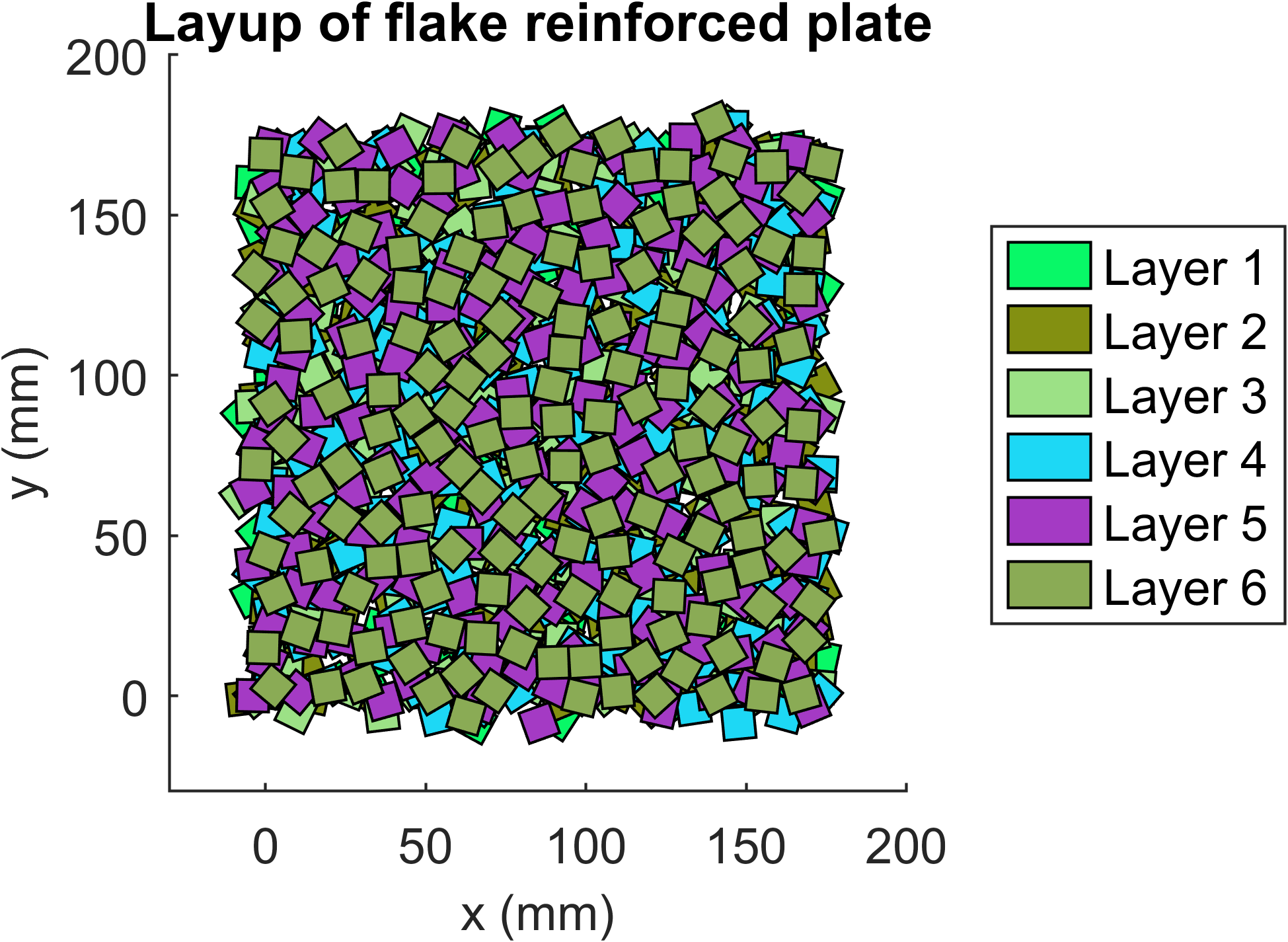Colloquium announcement
Faculty of Engineering Technology
Department Applied Mechanics & Data Analysis (MS3)
Master programme Mechanical Engineering
As part of his / her master assignment
Meihuizen, M.H.G. (Matthijs)
will hold a speech entitled:
Development of a framework for generating planar meso-structure of flake reinforced composites for numerical modelling
| Date | 18-01-2023 |
| Time | 10:00 |
| Room | RA 2501 |
Summary
Fibre reinforced composites are used in aerospace and automotive applications due to their higher stiffness and strength to weight ratio compared to metals. Cutting waste is an unavoidable by-product of the manufacturing process of fibre reinforced composites. One of the ways to reuse the composite cutting wastes is to mould the chopped wastes (flakes) into a discontinuous composite by compression moulding. The meso-structure of these discontinuous composites consists of randomly located and randomly oriented flakes. However, the current adoption level in the industry is low due to the high variance in strength of this material. This unpredictability causes unfavourable design choices due to high safety factors. The aim of this research is to obtain a better understanding of the mechanical properties of the flake reinforced composites by performing numerical simulations on a recreated random meso-structure.
This research considers two different meso-structures of discontinuous composites for analysis: controlled and random. For the controlled meso-structure slits are made in continuously woven layers to create a discontinuous composite with a known meso-structure.
The random meso-structure consists of randomly located and oriented flakes. The randomness in orientation is characterised by analysing micro computed tomography (µCT) scans of the material using an orientation detection algorithm developed in this work. This provides the orientation distribution of the flakes in the physical material. The algorithm is validated using physical specimens consisting of quasi-isotropic layup. Geometries of both meso-structures are numerically recreated and modelled in a finite element software where a numerical simulation of a uniaxial tensile test is performed. The random meso-structure is simplified to planar layup of layers with randomly oriented flakes, in order to avoid regular discretisation. Specimens of the controlled meso-structure are tensile tested to compare and validate the results of numerical experiments. Digital image correlation is used to capture the strain field in the physical experiments.
This research concludes that µCT-scans can be used for the characterisation of the orientation distribution of the meso-structure of flake composites. Furthermore, modelling the meso-structure with planar layers of flakes causes a lower fibre volume fraction due to a geometrical limitation on the number of regular shaped flakes that can be placed randomly. Therefore, this method of modelling the meso-structure should be improved. The strain patterns observed in the finite element results are found to be similar to the physical experiments.
Assessment committee |
chair Signature d.d. |
|
| Dr. Ir. R.G.K.M. Aarts Dr. M.I. Abdul Rasheed Dr. A. Stanic Dr. Ir. L. Warnet |
(chair) (supervisor) (supervisor) (external member) |
|
